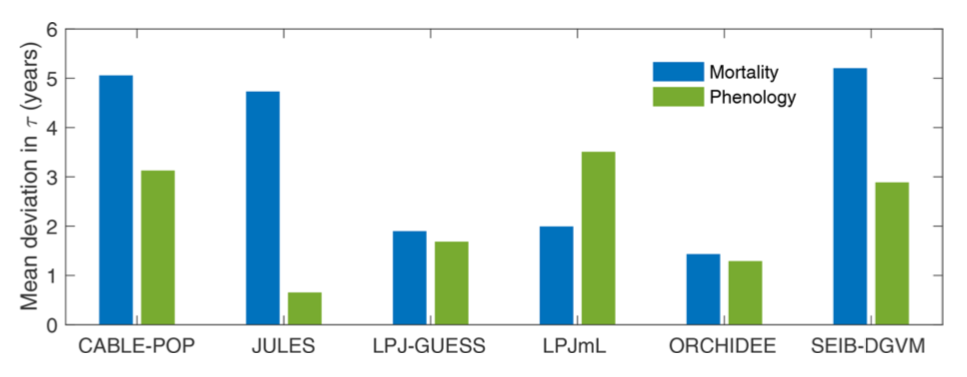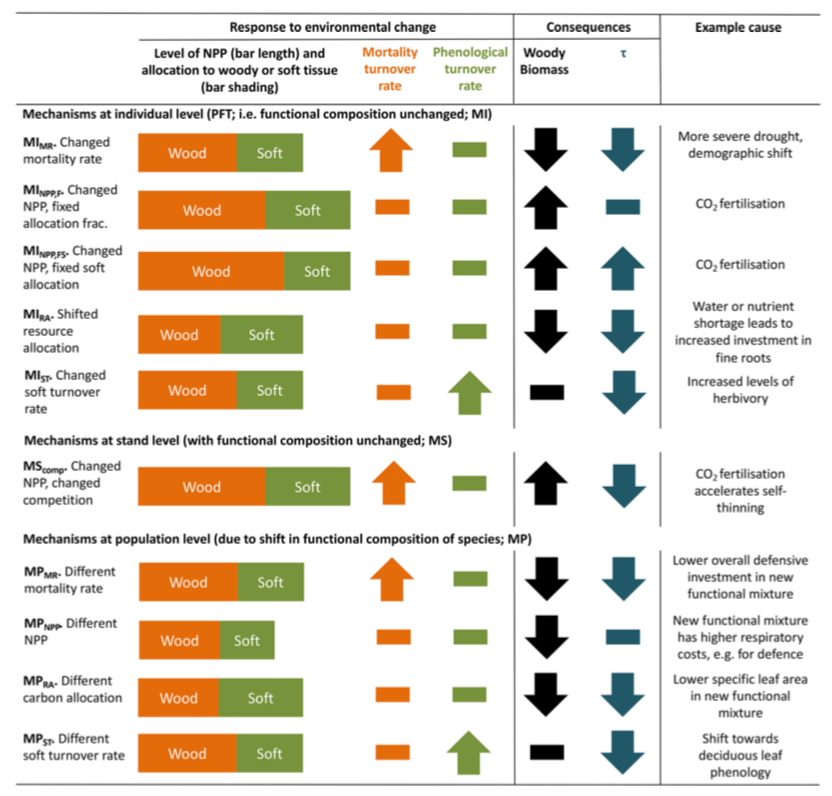Why do global terrestrial biosphere models differ in calculations of forest carbon turnover? Finally out today in @EGU_BioGeo! With @ttrademacher @DocAHarper @JoergSteinkamp @anjarammig @westsyduhie @TreeMort_ERC
https://bg.copernicus.org/articles/17/3961/2020/bg-17-3961-2020.html
What">https://bg.copernicus.org/articles/... did we find?
1/n
https://bg.copernicus.org/articles/17/3961/2020/bg-17-3961-2020.html
What">https://bg.copernicus.org/articles/... did we find?
1/n
The 6 #TBMs differed substantially in both baseline and future calculations of forest biomass carbon turnover times. We highlighted 7 major causes of this disagreement… Spoiler: it’s not all about #TreeMortality… (although it’s important!!)
2/n
2/n
1. Spatial variation in turnover time was driven as much by phenological processes as mortality processes in 4 of the #TBMs. This is about plant functional type distributions and turnover rates for leaves and fine roots (which are hard to constrain).
3/n
3/n
2. The fraction of biomass turnover flux resulting from tree mortality (or branch fall) varied from 37% to 81% depending on the #TBM. This comes down to getting the right balance of C allocation between woody and soft tissues.
4/n
4/n
3. Long turnover times could be obtained by allocating more carbon to long-lived tissues (i.e. wood) or having longer turnover times for wood. The #TBMs showed both strategies. They also underestimated woody turnover, at least in the tropics.
5/n
5/n
4. The #TBMs differed in the main mechanisms for tree death, with 2 simulating physical disturbance (fire, wind, etc) as dominating and 3 simulating carbon-balance as the main reason for death. This sets the scene for wide divergence in future projections.
6/n
6/n
5. Environmental change affects turnover time by increasing mortality rates of existing trees and by changing the forest composition to plant types with different characteristic turnover rates. Often the latter happened without the former - establishment failure.
7/n
7/n
6. Elevated CO2 did appear to help reduce mortality rates from environmental stress through elevating NPP in two of the #TBMs, but it also accelerated competition, which acted to increase mortality rates in at least 4 of them.
8/n
8/n
7. There were different hypotheses on whether NPP gains from elevated CO2 were invested relatively equally across all tissues, or primarily in wood. This assumption is incredibly influential for future changes in biomass turnover time (2nd/3rd row in pic).
9/n
9/n
Many of these challenges are becoming increasingly solvable, with lots of exciting work going on across the community. An exciting time to be involved in #TBM modelling!
10/n
10/n
All the simulations from CABLE-POP, JULES, LPJ-GUESS, LPJmL, ORCHIDEE and SEIB-DGVM are available to download from Zenodo, https://zenodo.org/communities/vegc-turnover-comp/?page=1&size=20">https://zenodo.org/communiti... #OpenScience
11/n
11/n

 Read on Twitter
Read on Twitter







